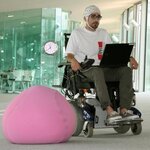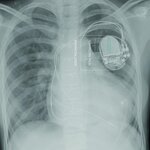Technology

Though the public imagery of science is lab coats and test tubes, less well-known is the role of software development in science.
It is often the case that tools don't really exist to do some of the things that need to be done, but after the hard work of creating, testing and validating the code, it only gets mentioned in a line about the roles of the authors that few people actually read.(1)
One great thing about the programming community is that people love to share - the repository known as GitHub is stuffed with utilities, snippets and full-blown programs, but unless you are both a…

A new paper suggests that when brains are organized into modules they are better at learning - without having to replace old knowledge.
The authors believe the findings will accelerate attempts to create artificial intelligence (AI) though they would also have value in understanding the evolution of intelligence in natural animals. Kai Olav Ellefsen of Norwegian University of Science and Technology, Jean-Baptiste Mouret of Pierre&Marie Curie University and Jeff Clune of the University of Wyoming used simulations of evolving computational brain models - artificial neural networks -…

In the 1942 short story "Runaround", author Isaac Asimov came up with Three Laws of Robotics and those fictional ethics have captivated engineers ever since.
Maintaining the spirit of Asimov, Dr. Eduardo Morales Manzanares of the National Institute of Astrophysics, Optics and Electronics (INAOE) in Mexico has developed robots with artificial intelligence that don’t require specialized personnel to be controlled.
Instead, software allows the robot named Sabina to be able to learn with the guide of the user, either through a remote control or through voice commands or simply by showing the…

Silicon wafer imaging technology has been modified to scan the human body down at the level of a single cell - zooming in and out of a joint in the body like Google Maps does from the sky.
Coupled with Google algorithms, the imaging system developed by German optical and industrial measurement manufacturer Zeiss is able to zoom in and out from the scale of the whole joint down to the cellular level, reducing to "a matter of weeks analyses that once took 25 years to complete," said Professor Knothe Tate of UNSW Australia.
The team is also using microtome and MRI technology…

Have you ever texted somebody saying how “ducking annoyed” you are at something? Or asked Siri on your iPhone to call your wife, but somehow managed to be connected to your mother-in-law?
If you have, you may have been a victim of a new challenge in computing: that fine line where we trust a computer to make predictions for us despite the fact that it sometimes gets them wrong.
For one hapless administrator with the Australian Immigration department, this level of trust has almost certainly led to major embarrassment (or worse), with it being revealed that during November last year they…

In a recent survey 76% of young respondents listened to music from YouTube every day with Spotify coming in second. But YouTube is so popular for music listening and new music discovery that even active Spotify users still visited YouTube often to complement Spotify’s incomplete music selection.
YouTube was also perceived as the most shareable music source by the students in their early 20s who participated in a recent Internet-based study.
That is a much different perception of YouTube, which is regarded as a video-sharing service. And it spells the end for .mp3 that everyone wants to…

Researchers have tested a range of neuroprosthetic devices, from wheelchairs to robots to advanced limbs, that work with their users to intelligently perform tasks.
They work by decoding brain signals to determine the actions their users want to take, and then use advanced robotics to do the work of the spinal cord in orchestrating the movements. The use of shared control - new to neuroprostheses - "empowers users to perform complex tasks," says José del R. Millán, who presented the new work at the Cognitive Neuroscience Society (CNS) conference in San Francisco today.
Millán, of the Swiss…

During the launch of the latest Soyuz to the space station Scott Kelly and Mikhail Kornienko calmly looked at an iPad. Other than the cramped confines of the Soyuz capsule, and their space suits, they looked like business men discussing their presentation while flying economy class.
Yet for years due to nothing but fear of new technology one could not use a laptop, cell phone, or tablet on a commercial flight. Supposedly having more computers on planes which for a long time have been highly computerized would've been too much. The ban on using such devices on planes was, in…

With each beat of a healthy heart, an electrical signal moves from the upper to the lower chambers of the heart. As this signal moves, it results in the heart contracting and pumping blood. Congenital heart block is a defect of the heart's electrical system that originates in the developing fetus, greatly slowing the rate of the heart and impacting its ability to pump blood.
Although the condition can be diagnosed in utero, all attempts to treat the condition with a standard pacemaker have failed. Each year, approximately 500 pregnancies in the U. S. are affected by such fetal heart…

In light of the news of another tragic airline crash, and following in the wake of several other high profile air disasters, it might be natural to ask whether air travel is becoming less safe.
In fact, according to the numbers, air travel is safer than at almost any point in the history of commercial flight.
While the number of fatalities in some recent crashes has been high, the number of overall fatal accidents in recent years has dropped to its lowest point since the dawn of the jet age. Also, as more and more people take to the skies each year, the numbers of fatalities per liftoff or…